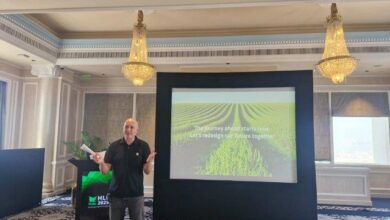Zwi G. Weinberg
forage preservation and by-products research unit, agricultural research organization, the volcani center, bet dagan, israel (retired).
introduction
rations for ruminants include roughage and concentrates. roughage comprises forage whole crops such as alfalfa, maize, sorghum and wheat which contain a high concentration of fibers, necessary for the adequate function of the rumen. in modern agriculture these are harvested during the season and preserved as silage or hay to insure continuous supply throughout the year. concentrates supply the animals with energy and proteins and include dried grains, mainly corn and barley and meals such as soybean meal.
prices of forage crops which are used for ruminant feeding are at the rise for various reasons: demand is increasing in developing countries, recurring droughts in various parts of the globe and the fact that much of the grown forage crops are designated for bio-fuel production lower their availability for animal husbandry. therefore, the use of by-products and crop residues for animal feeding is a lucrative option. agricultural by-products are obtained from the food processing industry or from surplus; crop residues comprise the biomass which remains after the grain or vegetable harvest. such materials are available in large quantities and contain valuable components for ruminant nutrition (energy, protein and fibers), their price is relatively low. if not used, large quantities of by-products become an environmental burden. obstacles for using by-products include their high susceptibility to spoilage and the fact that some are seasonal. adequate and inexpensive preservation technologies may help overcome these obstacles.
the israeli dairy herd comprises high lactating cows with an average annual milk yield of 12,000 liters at 3.7% fat and 3.2% protein. in addition there are 80,000 heifers and 50,000 bull calves. the lactating cows are fed 22 kg dm total mixed rations (tmr), two-thirds of which are concentrates and one-third roughage (silage and hay). the tmr usually includes about 20% of by-products which replace some of the concentrates or roughage. the following paragraphs describe examples of major by-products which are used in ruminant feeding in israel, their advantages and problems which are associated with their utilization.
by-products in israel
the annual amount of by-products in israel which can be used for ruminant feeding is estimated at 630,000 tons of dry matter. the major moist by-products which are available include whey, citrus peels, pomegranate pulp (rich in anti-oxidants), corn cake (obtained after starch and oil extraction), grape pulp, spent brewer’s grains, coffee residues and aspergillus residue (a by-product obtained from the citric acid manufacturing by fermentation of this mold). the production of fruits and vegetables in israel is dynamic and growing areas expand or contract according to market demands and export opportunities. the available by-products change accordingly. for example, citrus growing areas have shrunk considerably while those of pomegranates increased due to their valuable nutraceutical properties as natural anti-oxidants. therefore, handling and preservation technologies for rising by-products should be adapted continuously.
some by-products are very moist and rich in sugars (e.g.,citrus pulp and pomegranate peels) and therefore, they spoil readily mainly by large yeast populations. furthermore, they produce large volumes of sticky effluent which is very high in bod (biological oxygen demand) with a serious potential to pollute the scarce freshwater sources. sun drying is impossible because of the thick bulk of such by-products and fuel drying is not cost-effective (in brazil they dry and pellet citrus pulp by using dried sugarcane bagasse as fuel). therefore, such by-products should be served immediately or mixed with some moisture absorbent (e.g., wheat straw, dried ground palm leaves, grains) in order to reach a stabilized ensiled material. care should be taken to keep acceptable nutritional value of such mixtures. a similar approach is used in a mixture of dry almond hulls and rejected moist dairy products called sugot™ which is produced by a special processing plant in northern israel.
some by-products contain detrimental substances which reduce their nutritive value. examples are olive cake which contains high concentrations of tannins which inhibit proper protein degradation in the rumen, and coffee residues which are high in caffeine which is not good for the animals. therefore, the use of such by-products for animal feeding is limited. the neutralization of detrimental substances in by-products is a research challenge. the nutritional value of some dried by-products is too low and they might serve only as a dry bulk or as moisture absorbents in limited amounts (e.g., dried palm leaves). another problem pertains to small amounts of by-products produced at a certain area which presents a logistic challenge in collecting and shipping them in a cost- effective manner. an example comprises the surplus of produce which remains daily in open markets and in large grocery stores. we were told that some supermarkets order daily half a ton of certain commodities above the expected consumption to ensure supply. some leftovers are supplied to local zoos but most are dumped and thus increase the environmental burden on landfills.
another category is crop residues. in southern israel, peppers, tomatoes and eggplants are grown in greenhouses. after the vegetables are picked large volumes of vegetative biomass is left. in a project aimed at utilization of the biomass for ruminant feeding, a special mini-combine was developed at the agricultural engineering institute of the volcani center which is able to pick it up from the greenhouses. a formula for proper ensiling was developed in commercial size bales (by mixing with dried palm leaves which are abundant in the area and some molasses supplement). problems encountered,which still have to be solved include separation of the biomass from supporting metal wires, and surprisingly, beef heifers rejected the ensiled pepper biomass, probably because the flavor of some ingredient. this warrants more research.
in conclusion, many by-products are used up to 20% in total mixed rations of ruminants in israel with no detrimental effect on animal performance. such practice lowers the ration price and alleviates environmental burden which large piles of rotting by-products might have caused. some by-products can be used in limited amounts only. much larger amounts of by-products are available in many countries (e.g., coffee pulp in mexico) where stabilization technologies should be adopted according to the specific composition of the by-products and the conditions which prevail.
acknowledgment: the photos were kindly contributed by dr. gilad ashbell, previously the head of the forage preservation and by-products research unit at the volcani center.





